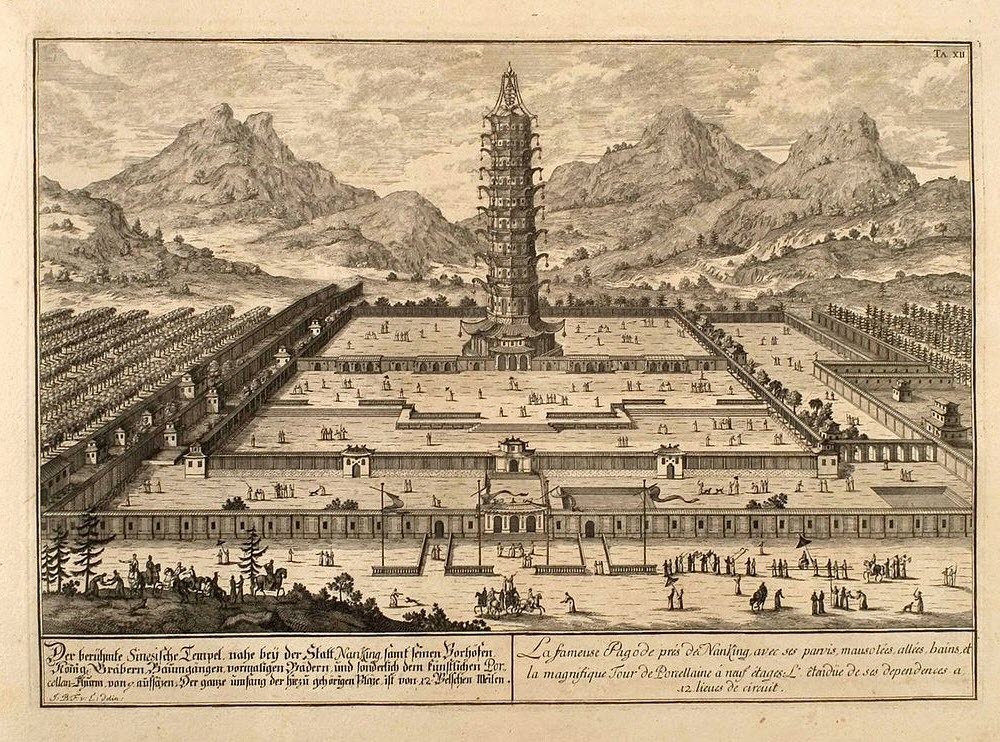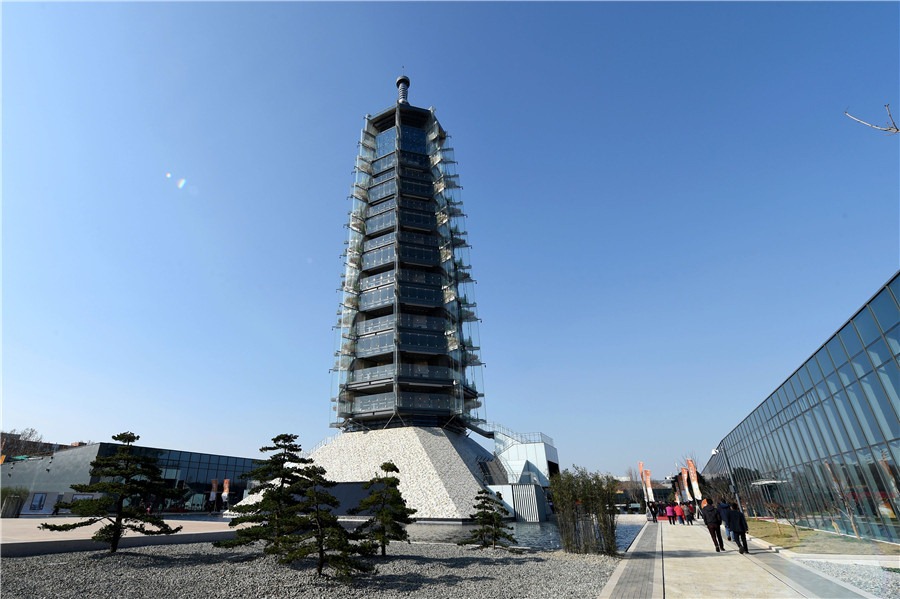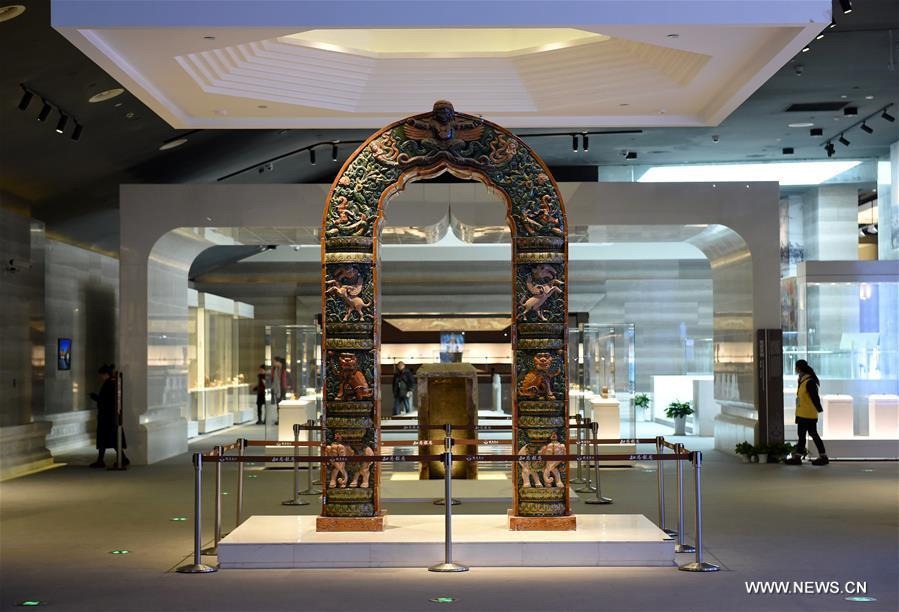The lost Porcelain Tower of Nanjing, ranked one of the seven wonders of the medieval world, is back in Nanjing more than a hundred and fifty years after it was destroyed. One of the most famous of Chinese buildings, the tower was constructed in the 15th century by the Ming Dynasty’s Yongle Emperor in honor of his deceased mother. It was part of a large complex of the Bao'en Temple. Neither the original temple nor the tower survive today.
The tower was built with glazed white porcelain bricks that were said to glitter in the sunlight. Worked into the porcelain of the walls was a mixture of green, yellow, brown and white glazes and stonework shaped in the form of animals, flowers, bamboo, landscapes and Buddhist images.

Early illustration of the Porcelain Tower, from “An embassy from the East-India Company” (1665) by Johan Nieuhof
When renowned 17th century Dutch traveller Johan Nieuhof saw the tower and wrote about in his illustrative and informative China memoirs, at once it captured the imagination of the Europeans. Porcelain, at that time, was one of the most prized material, an expensive luxury ware that came only from China, because the Western people did not know how to make porcelain before the 18th century. The idea of an entire tower made of porcelain excited all sorts of Orientalist fancies. The tower became one of the most well-known pieces of Chinese cultural heritage abroad, and subsequently, a national treasure for China.
The Porcelain Tower rose nearly a hundred meters and consisted of nine stories with a spiraling staircase in the middle. From each level protruded a roof that curved upwards and encircled the tower. From the projecting flanges of these roofs were suspended bells that decreased in size proportional to the taper of the tower. At the top was a golden pineapple. When it was built, the tower was one of the largest buildings in China.
The tower stood for four hundred years until 1801, when a bolt of lightning hit the tower and destroyed the top four stories. It was quickly rebuilt, but in the 1850s, during the Taiping Civil War, rebels took control of the city. At first they smashed the Buddhist images and destroyed the inner staircase of the tower to deny the Qing enemy an observation platform. Then eventually, they destroyed the tower completely.
In 2008, numerous relics belonging to the tower were discovered in an excavation generating a new interest to try to rebuild the landmark. In 2010, a Chinese businessman donated one billion yuan ($156 million) to the city for the cause. This was reported to be the largest single personal donation ever made in China.
In December last year, the Porcelain Tower Heritage Park (also called the Porcelain Tower Relics Park) officially opened to the public. The highlight of the park is the reconstructed Buddhist temple, featuring the distinctive porcelain pagoda. The park also includes a conservatory of the ruins exhibiting Buddhist relics and past archaeological discoveries.

Porcelain Tower, from “An embassy from the East-India Company” (1665) by Johan Nieuhof

The Porcelain Pagoda, as illustrated in Fischer von Erlach's “Plan of Civil and Historical Architecture” (1721)

The reconstructed Porcelain Tower at the newly opened Porcelain Tower Heritage Park in Nanjing, capital of East China's Jiangsu. Photo credit: bbs.photofans.cn

The reconstructed Porcelain Tower at the newly opened Porcelain Tower Heritage Park in Nanjing, capital of East China's Jiangsu. Photo credit: Xinhua

Photo shows an exhibition hall at the newly opened Porcelain Tower Heritage Park in Nanjing, capital of East China's Jiangsu Province on Dec 16, 2015. Photo credit: Xinhua

Photo shows an exhibition hall at the newly opened Porcelain Tower Heritage Park in Nanjing, capital of East China's Jiangsu Province on Dec 16, 2015. Photo credit: Xinhua

The original blocks of the Nanjing Tower's arched door, now pieced back together and on display at the newly opened Porcelain Tower Heritage Park. Photo credit: Xinhua/Sun Can

Details from the Nanjing Tower's arched door. Photo credit: www.talknj.com

Details from the Nanjing Tower's arched door. Photo credit: www.talknj.com
Sources: www.hellonanjing.net / Wikipedia / shanghaiyangtzedelta.wordpress.com



So tacky. What a shame
ReplyDelete